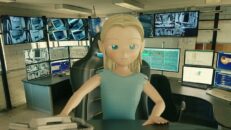Introduction
In the exhilarating world of archery, the dynamics of shooting arrows have transcended traditional methods. Thanks to the ingenuity of 3D animation, a unique approach to mastering the bow has emerged, offering enthusiasts an immersive and engaging experience. This article delves into the fascinating realm of shooting arrows with a revolutionary twist, guided by the expertise of a skilled 3D animator.
The Evolution of Archery
Archery has a rich history, dating back centuries and spanning across various cultures. Traditionally, learning the art of archery involved a combination of theoretical knowledge and hands-on practice. However, with technological advancements, especially in the field of animation, a new avenue has opened up to refine and enhance archery skills.
The Role of 3D Animation
1. Visualization and Precision
One of the standout advantages of integrating 3D animation into archer
y training is the ability to visualize every aspect of the arrow’s trajectory. Traditional methods might rely on verbal instructions or static images, leaving room for interpretation. With 3D animation, learners ca
n witness the entire process in a dynamic and realistic environment, ensu
ring a more accurate understanding of the shooting mechanics.
2. Real-time Feedback
Gone are the days of waiting for an instructor to review your technique. 3D animation enables real-time feedback, allowing archers to assess their form, posture, and release instantly. This immediate feedback loop accelerates the learning curve, helping archers make necessary adjustments on the fly.
The Unique Methodology
3. Step-by-Step Guidance
The 3D animation method breaks down the archery process into comprehensible steps. Each movement, from nocking the arrow to the release, is meticulously detailed in a step-by-step format. This granular breakdown ensures that learners can focus on mastering individual components before progressing to the next, fostering a solid foundation.
4. Customizable Environments
Unlike static practice ranges, 3D animation allows archers to practice in various virtual environments. From serene forest settings to challenging mountainous terrains, archers can tailor their training scenarios to match their skill levels and goals. This adaptability adds an element of excitement and unpredictability to the training process.
Frequently Asked Questions (FAQs)
Q1: Can beginners benefit from 3D animation archery training?
Absolutely! The step-by-step guidance provided by 3D animation makes it an ideal tool for beginners. It simplifies the learning process, allowing novices to grasp the fundamentals of archery with greater ease.
Q2: How realistic is the 3D animation representation?
Modern advancements in animation technology have reached a level of realism that closely mimics actual archery scenarios. The virtual environments, arrow movements, and physics are meticulously crafted to provide an authentic learning experience.
Q3: Can this method be used for advanced archers as well?
Certainly! While beginners find the step-by-step breakdown beneficial, advanced archers can use 3D animation to fine-tune their techniques. The customizable environments add a layer of complexity, catering to archers at various skill levels.
Q4: Is specialized equipment required for 3D animation archery training?
No specialized equipment is necessary. As long as learners have access to a device with 3D capabilities, they can delve into the world of 3D animation archery training. It’s a user-friendly and accessible method for all.
Conclusion
In conclusion, the integration of 3D animation into archery training represents a groundbreaking approach to honing the skills of both beginners and seasoned archers. The visual precision, real-time feedback, and unique methodology make it a valuable tool in the archery community. Embrace the future of archery training with 3D animation and take your bow mastery to new heights!



